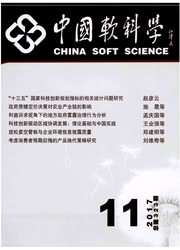

 中文摘要:
中文摘要:
依据技术生命周期理论和Logistic模型,使用usFro专利数据分析G7和中国在ICT九个子技术领域的发展轨迹,阐明各国的战略布局特征。结果表明,在G7国家ICT九个子技术领域处于不同的发展阶段,移动通信和远程信息处理、集成电路和智能机器人领域均已进入成熟期,无线射频识别和传感网络、宽带和家庭网络和计算机软件领域处于快速成长期,平板显示、数字电视和个人PC领域正经历成长期向成熟期的过渡。各国结合子技术领域发展特点和本国技术发展水平,采取“重点突破”或“全面推进”的发展策略。中国在九个子技术领域的起步时间较晚,但技术发展速度高于G7国家,目前中国在多个子领域处于快速发展阶段。
 英文摘要:
英文摘要:
Based on technology life cycle theory and Logistic model, we study the development trajectory of the ninesubfields in ICT in G7 and China, and reveal the strategy layout of all countries. The result shows that G7 are in thedifferent periods in the nine subfields. Mobile telecom and telematics, Integrated circuit and Intelligent robot are in themature period, Radio frequency identification and sensor network, Broadband and home network and Software are in thegrowth period, and Flat panel display, Digital television and broadcasting, and Personal computer are transferring from thegrowth period to the mature period. Combined with the characteristic of the technology development and the nationaldevelopment level, G7 take different strategies of "priority" and "entirety" respectively. China starts late in nine subfields, butthe speed of technology development is higher than that of G7. At present ,China is in the growth stage in several subfields.
 同期刊论文项目
同期刊论文项目
 同项目期刊论文
同项目期刊论文
 A Model to Analyze Environmental Policy of Resource Reallocation and Pollution Control Based on Firm
A Model to Analyze Environmental Policy of Resource Reallocation and Pollution Control Based on Firm 期刊信息
期刊信息
